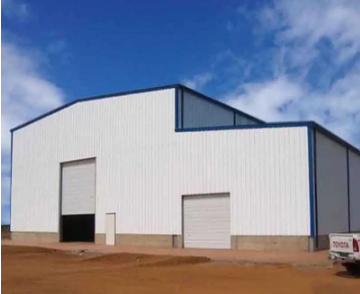Building the Future: Exploring Innovations in Construction Engineering
In the realm of construction engineering, innovation is the cornerstone of progress, shaping the cities of tomorrow and transforming the way we think about infrastructure. Among the vanguard of this transformation is Qingdao Omiga Construction Engineering Co, a beacon of pioneering strategies and technologies in the construction sector. This article delves into the latest innovations in construction engineering, showcasing how these advancements promise to redefine urban landscapes, enhance sustainability, and streamline construction processes.
Embracing Sustainability and Green Building Practices
One of the most significant shifts in construction engineering is the move towards sustainability and green building practices. This paradigm shift is driven by a global recognition of the need to reduce carbon footprints and mitigate climate change impacts. Innovative construction methods now incorporate materials that are not only durable but also environmentally friendly, such as recycled steel, bamboo, and low-VOC (volatile organic compounds) paints. Moreover, green building certifications, such as LEED (Leadership in Energy and Environmental Design), have become a gold standard in the industry, encouraging projects to incorporate energy-efficient systems, water-saving technologies, and better indoor air quality. Visit https://www.xgzbuilding.com/
Advancements in Construction Technology
Technological advancements are revolutionizing construction engineering at an unprecedented pace. Robotics and automation, for instance, are becoming increasingly prevalent on construction sites. Robots can now perform tasks ranging from bricklaying to rebar tying, not only increasing efficiency but also reducing the risk of injuries associated with manual labor. Additionally, 3D printing is pushing the boundaries of what's possible in construction, allowing for the fabrication of complex building components directly on-site, reducing waste and speeding up construction times.
The Rise of Modular and Prefabricated Construction
Modular and prefabricated construction methods are gaining traction as a way to significantly reduce construction times and costs. This approach involves manufacturing building components in a factory setting, then transporting them to the construction site for assembly. This method not only streamlines the construction process but also minimizes on-site waste and disruptions. Modular construction also offers the flexibility to adapt and repurpose buildings with minimal effort, catering to the dynamic needs of urban development.
The Integration of Digital Tools in Construction Planning and Management
Digital tools and software are transforming construction planning and management, making it possible to visualize and simulate building designs with incredible accuracy. Building Information Modeling (BIM) software allows for the creation of detailed 3D models of buildings, enabling engineers, architects, and construction managers to collaborate more effectively and make informed decisions. These digital tools facilitate better project management, from initial design through to completion, ensuring projects are delivered on time and within budget.
Smart Buildings and IoT Integration
The future of construction engineering also lies in the integration of smart technologies and the Internet of Things (IoT) into building designs. Smart buildings equipped with sensors and IoT devices can monitor and manage everything from energy consumption to security systems in real-time, ensuring optimal performance and comfort for occupants. This not only enhances the functionality of buildings but also contributes to sustainability goals by optimizing energy use and reducing waste.
Addressing the Skills Gap Through Education and Training
As the construction industry evolves, so too does the need for skilled professionals who can navigate the complexities of modern construction engineering. Educational institutions and training programs are adapting their curricula to include courses on sustainable building practices, digital tools, and new materials and technologies. This focus on education is essential to prepare a new generation of engineers and construction professionals equipped to tackle the challenges of the future.
The Path Forward
The innovations in construction engineering are not only about embracing new technologies and methods but also about rethinking the role of construction in society. As we look to the future, the focus will increasingly be on creating buildings and infrastructure that are not only functional and aesthetically pleasing but also sustainable and resilient. Qingdao Omiga Construction Engineering Co, along with other pioneers in the field, are leading the way in this exciting journey towards building a better future.
In conclusion, the innovations in construction engineering are setting the stage for a revolution in how we build and inhabit our world. From sustainable building practices to cutting-edge technologies and digital tools, these advancements promise to enhance efficiency, reduce environmental impacts, and create more livable, adaptive urban spaces. As the industry continues to evolve, it will undoubtedly face challenges, but with these innovations, we are well-equipped to build the resilient, sustainable cities of the future.


Comments
Post a Comment